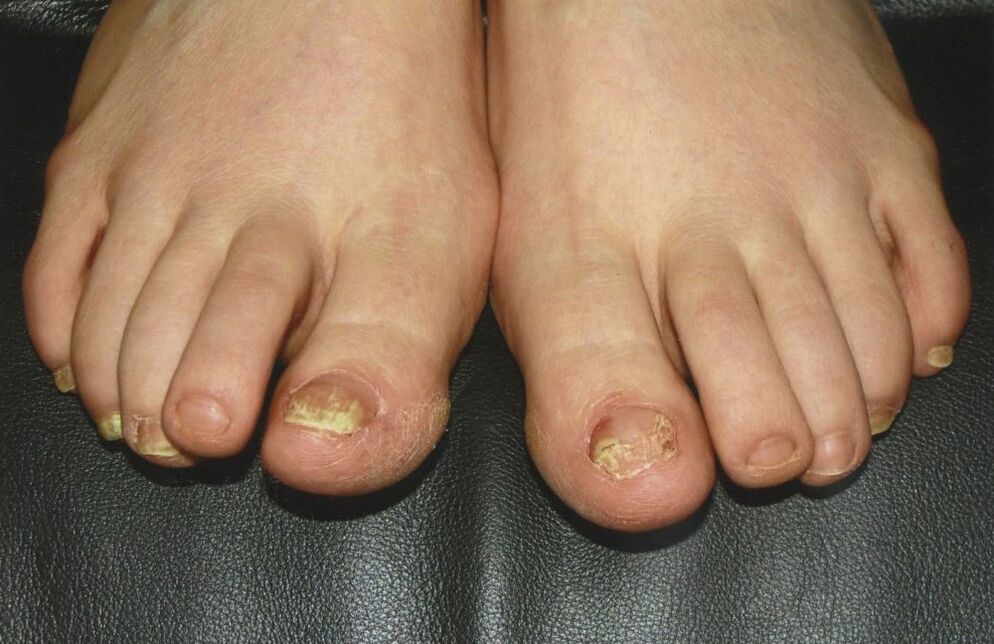
Mycoses are diseases caused by pathogenic microorganisms (fungi). The disease is not life-threatening, but it causes discomfort and is difficult to treat. Most often, people with weak immunity, hormonal imbalance and non-compliance with the rules of personal hygiene are most susceptible to infection. The treatment of the fungus sometimes lasts 3-4 months with the help of a range of drugs. To improve the therapeutic effect of drugs, doctors prescribe prescriptions of traditional medicine. The key to successful treatment is early diagnosis of the disease. In the early stages, mycoses are more susceptible to antifungal drugs.
Variety and symptoms of dermatomycosis
Science knows thousands of species of fungi, but only a few hundred of them are pathogenic to humans.
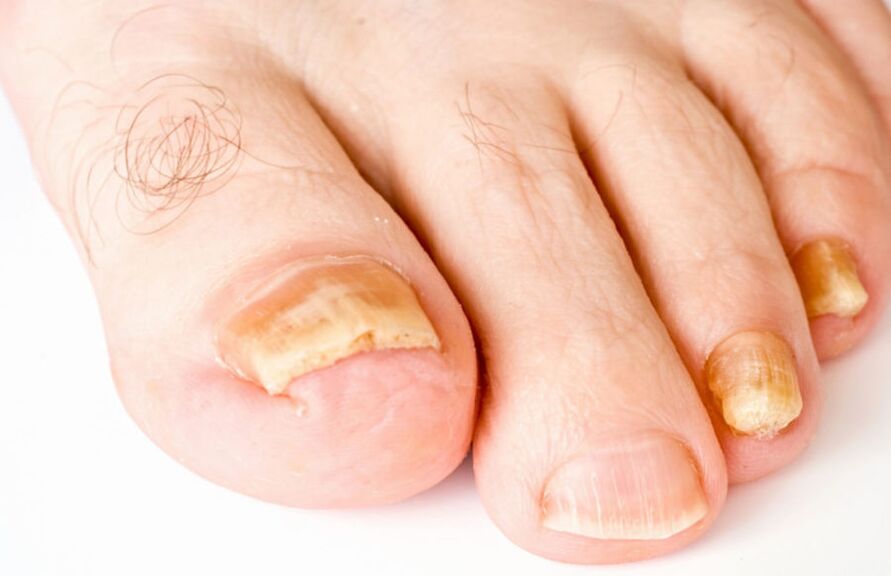
Types of microorganisms that cause athlete's foot:
- trichophytons;
- dermatophytes;
- candida.
The first signs of mycosis are quite difficult to recognize. What the fungus on the feet looks like depends on the type of microorganism that affects the soft tissues.
Intertriginous form
The most common type of fungal infection. It appears in the summer, when the sweating of the feet increases. The folds in the interdigital space suffer first, later the infection affects the nearby areas and the nail plate.
First signs:
- dry skin between the fingers;
- cracks and wounds;
- severe itching and burning;
- peeling and discoloration of the epidermis.
squamous form
This type of fungal infection affects the lower part of the foot. The skin looks rough, calluses appear, keratinized areas, deep cracks. When walking a person feels pain.
The disease progresses rapidly, capturing the surroundings and the nail plate. In advanced cases, the nail changes color, shape and begins to shrink.
Important!
At the first suspicion of a fungal infection you should immediately consult a doctor for examination and treatment.
Dyshydrotic form
This type of fungus is rare. The first symptoms are watery multichambered vesicles with cloudy contents on the skin. Ulcers appear at the site of the ruptured formations, which combine with continuous erosion.
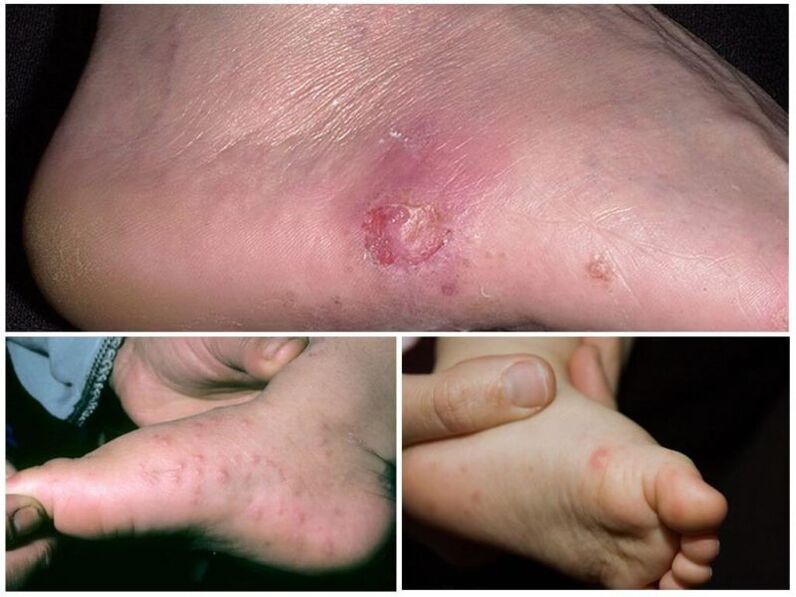
The main danger of this form of mycosis is the addition of concomitant infections. Pathogenic microorganisms penetrate the wounds, provoking other dermatological diseases. In the absence of timely therapy, large areas of the legs are affected. It becomes very difficult to cure mycosis.
Reasons
The main route of transmission is infection. If you do not follow the basic rules of personal hygiene, you can become infected through household items that the patient uses. Exfoliating particles of the epidermis, together with the causative agent of the disease, remain on shoes, towels, in places of infection. Once on the surface of a healthy person's skin, the fungus begins to actively multiply.
Spores of a pathogenic microorganism can survive in the environment for many months until they are exposed to favorable conditions. Public places are a great danger of infection - swimming pools, showers, baths, saunas, changing rooms in gyms.
To avoid infection, it is necessary to follow the rules of hygiene: change socks daily, wear comfortable shoes in which the feet do not sweat, after washing, dry the interdigital space well with a towel.
Treatment of fungus with drugs
An important factor in eliminating mycosis is the examination and timely treatment prescribed by a doctor.
Getting rid of the fungus is quite difficult. You will need a whole range of drugs for external and systemic action. You must first determine the type of pathogen. This can only be done in a specialized laboratory.
Ointments, creams
This type of drug has a high ability to penetrate deep into the affected tissues, reaching the mycelium.
Antifungal ointments are divided into 2 types:
- azole. Inhibits cell growth, destroys mycelium. The course of treatment with azole ointments usually lasts about a month;
- allylamine. Detrimental effect on yeast and mold. This type of ointment has antifungal and anti-inflammatory effect. Refers to cheap, effective means. The course of treatment is usually 3 months.
Advantages of ointments:
- no harmful effects on the gastrointestinal tract and liver;
- topical use allows you to maximize the impact on the pathogen;
- universality of use for the treatment of fungus on the skin and nails.
Characteristics of the use of antifungal ointments:
- before applying medication, feet should be washed thoroughly and dried with a towel;
- the drug is applied to the affected surface with a thin layer, rubbing movements;
- avoid getting the drug on the mucous membranes - nose, eyes, mouth;
- follow the instructions for use and the recommendations of a dermatologist.
Tablets
For more effective treatment of advanced mycoses, systemic therapy is prescribed together with external topical preparations.
Tablets for the treatment of severe forms differ in the active substance:
- based on ketoconazole. It is prescribed for the treatment of superficial mycosis, which is not amenable to treatment with topical agents. Destroys yeast, dimorphic fungi and dermatophytes;
- Based on terbinafine. Acts on dermatophytes;
- Based on griseofulvin. Acts on dermatophytes. It prevents the growth of fungi and destroys cell walls. This drug has increased toxicity, so modern medicine is gradually displacing it from the pharmacological market;
- based on fluconazole. The tablets belong to the group of azoles. Help get rid of the disease quickly.
Along with the treatment of fungal infections of the feet are prescribed drugs that stimulate the immune system and vitamin-mineral complexes to better fight the disease.
Treatment at home with folk remedies
Removal of the fungus with the help of recipes for alternative medicine is possible only in the early stages or in combination with pharmaceutical products.
Important!
Before starting self-medication at home, you should undergo an examination and consult your doctor.
iodine
The universal antiseptic has not only bactericidal but also antifungal effect. It is recommended to lubricate the affected areas at night. A sensitivity test is required before the procedure. To do this, a small amount of iodine is applied to the elbow joint. If after a few hours there is no redness of the skin, burning or itching, you can use this method. Before going to bed, take a foot bath, then wipe the skin well with a towel. In order not to cause chemical burns, iodine should be diluted with medical alcohol 1: 1. With a cotton swab, a thin layer of the solution is applied evenly to the areas affected by the fungus. Cotton socks are worn on top. Also, for prevention, nail plates are treated.
You can make an effective "speaker" based on iodine:
- Grind to powder 14 antifungal tablets;
- Mix with 100 ml of 1% dimexid and leave in a dark place for one day;
- Add 10 ml of iodine and vinegar essence.
Store the resulting mixture in a refrigerator and mix well before use. It should be applied to the affected areas of the skin with a cotton swab 1-2 times a day. The course of treatment is 1 month.
Hydrogen peroxide
Another well-known antiseptic that helps fight the manifestations of fungus on the feet. The solution is used in the form of applications applied to problem areas. Ten minutes twice a day will be enough to overcome mycoses in the early stages for 5-10 days.
Foot baths with the addition of peroxide are considered useful. Dilute 1: 1 with water. The solution is not enough, it is only necessary to put in it that part of the foot that is affected. The procedure takes 30-40 minutes. The liquid should not get on healthy skin, because it severely dehydrates soft tissues.
Celandine
The medicinal plant successfully treats many skin diseases, including mycoses. Decoctions are used for compresses and baths. If it is possible to get a freshly harvested plant, then you can try to cure the fungus with fresh juice.
To do this, pluck the bush, wash it under running water. Prepare the legs - evaporate, remove the scales. Yellow juice appears in the incision of the stem. They lubricate the affected surfaces. You should be extremely careful when self-medicating with celandine at home. This plant is poisonous. Its juice can cause severe skin burns.
A decoction of 5 tablespoons of herbs per 1 liter is prepared for stewing. boiling water. The solution is poured into a container with a tightly closed lid for 20 minutes. Then take a foot bath.
Apple vinegar
The acidic environment will help eliminate fungi in which it cannot multiply and exist. Apple cider vinegar is used in the form of foot baths and applications.
If the affected area is small, then it is enough to soak a cotton swab or a piece of cotton cloth with an aggressive substance. In case of copious application, healthy areas of the skin are smeared with oily baby protection cream and a vinegar-soaked sock is applied.
With it, acidify the foot bath water. After such steaming, the skin is well dried and other drugs of natural origin or pharmaceuticals are applied.
Other home remedies
Traditional medicine offers various tips for eliminating the fungus and its manifestations. Such means are easily prepared regardless of the components that are available in every home.
Homemade ointments:
- Mix equal proportions of yellow sulfur, copper sulfate and goose fat in an enamel bowl. Bring to a boil over low heat and transfer to a glass jar. The ointment is stored in the refrigerator. Apply daily morning and evening on the affected areas of the skin;
- Add wood ash to goose fat. Stir until smooth. Lubricate problem areas with a mixture twice a day;
- Mix the butter with the chopped garlic. The resulting mass is applied to the affected skin at night.
Prepared ointments according to the recipe of traditional medicine have a positive effect only in the case of the initial stage of the disease. In advanced mycoses they are used in combination with tablets.
Compresses:
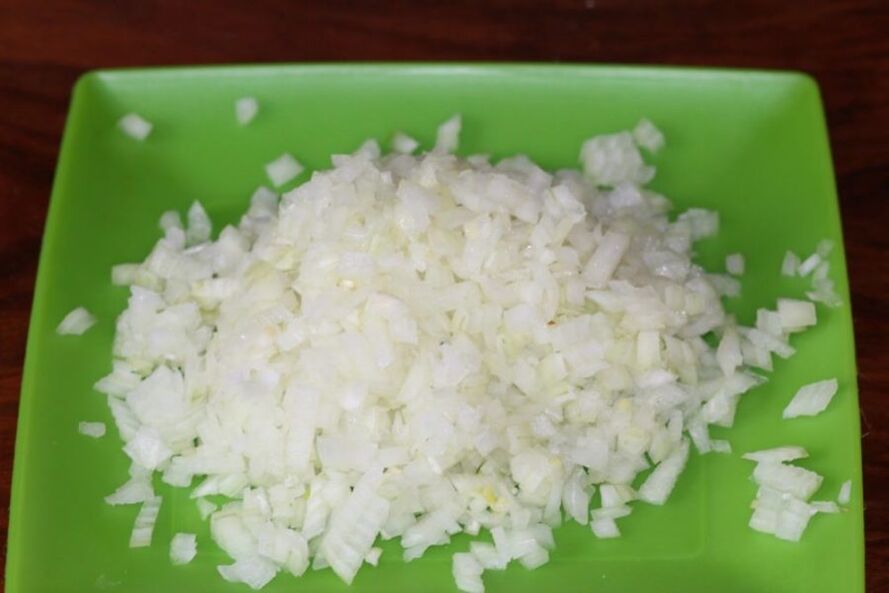
- Garlic. Medium onion and 2 cloves of garlic are crushed into a pulp. The mixture was spread in a thick layer on the skin, covered with a plastic bag, fixed with a bandage. A cotton sock is placed on top. The procedure is performed before bedtime. In the morning, the compress is removed and the feet are washed with warm water and soap. This method will help you deal with the disease in 7-10 days;
- Celandine with tea tree oil. 1 tbsp chopped herbs are mixed with the oil until a pasty substance is obtained. Apply liberally in the area of localization of the fungus and isolate, as in the previous recipe;
- Herbal compress. In a saucepan, mix 400 ml of sunflower oil, 1 tablespoon of herbs oman, mint, calendula and radiola. Heat the mixture over low heat to 50-60 degrees. Insist in a dark and cool place during the day. Remove the dry ingredients through a sieve or cheesecloth. With the oil mixture make compresses in the evening for 1-2 hours. The safe action of the recipe allows you to use it in childhood.
Important!
Before any medical procedures you should steam your feet for 15-20 minutes.
trays:
- The most common and simple suffocation solution consists of 1 tbsp. l. cooking or sea salt, 1 tbsp. l. baking soda and 1 l. water. The procedure takes 15 minutes. The feet are then washed with warm running water and dried;
- Make strong coffee, cool and dip your feet in it for 5 minutes. Then rinse with water;
- Pour a mixture of herbs with two liters of boiling water: 2 tablespoons chamomile flowers, horsetail, flaxseed. After cooling to a tolerable temperature, you need to wrap your legs in the resulting broth for 15 minutes.
Prevention
Any disease is easier to prevent than to cure. Therefore, in order not to get sick, you need to take some precautions.
Tips to prevent infection:
- wear natural, high-quality shoes in which the foot does not sweat;
- in places for public visits (baths, saunas, showers, swimming pools, changing rooms) it is mandatory to wear removable rubber slippers;
- use only personal shoes;
- maintains immunity.
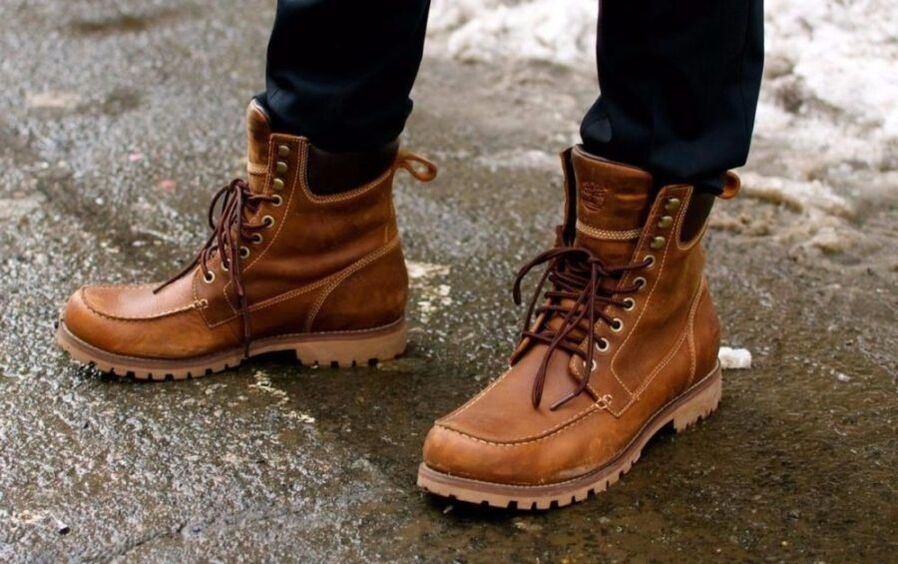
Fungus on the feet is an insidious disease. It's easy enough to get infected, but hard to get rid of. Usually people start the disease due to the fact that mycosis does not appear immediately. You need to be careful with your body and seek medical help at the first suspicious symptoms.















